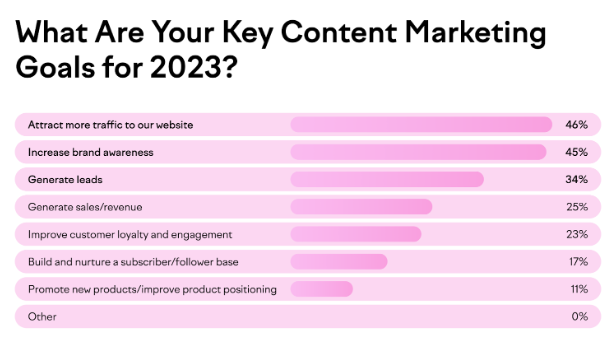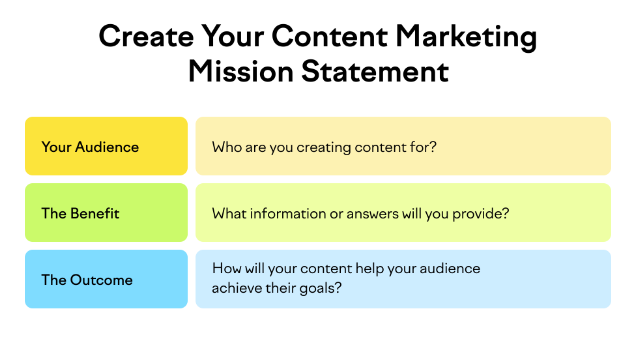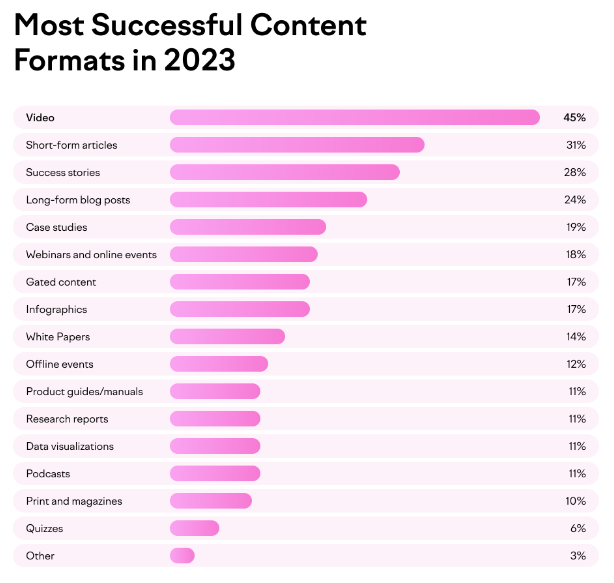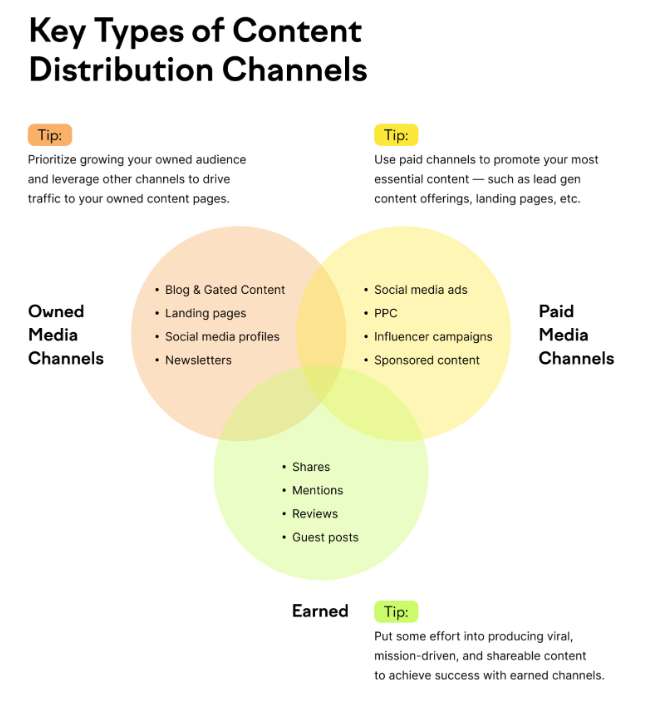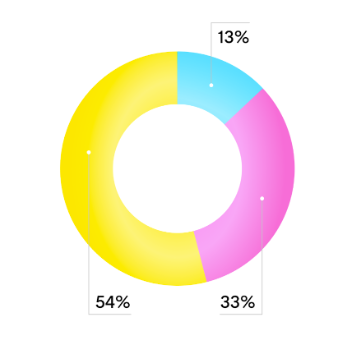Content marketing is a huge part of the world now. It includes blog posts, videos, infographics, and more with the intent to attract, engage, and retain a defined audience.
The thought behind it is twofold: First, by producing this, you’re creating more pathways for people to discover your site — and, through extension, become more familiar with your brand and business.
Secondly — and this is something that’s increasingly being ignored for short-term gains and in the process alienating potential customers — but by providing valuable, helpful, high quality content, you can not only bring in users to your site but keep them routinely returning as you become their established brand to inform them on related topics.
In other words: Quantity provides entry points for users to find you; quality provides incentive for users to keep coming back.
Here, we’re looking at the content marketing cycle, step-by-step. That’s strategy, creation, distribution, and measurement.
Let’s start from the top.
Strategy
Establishing clear goals and a clear strategy to that end are crucial to everything else in your process. Neglecting this step will leave all future steps disconnected.
So, in the big picture, what are goals specific to your brand that you want to achieve with publishing your works?
Image source: semrush.com
When considering this, we recommend taking a step back and considering the mechanisms inherent to content creation and consumption — how will people naturally discover and interact with the pieces you publish?
On a macro scale, this generally leads to the conclusion that content marketing itself is primarily about improving your brand awareness — both by increasing the number of people aware of you and increasing the value people feel towards you. (As we mentioned previously, neglecting the “quality” part of your content will work against this second part.)
So, this knowledge should inform your goal setting here.
Further breaking down your goals and strategy to achieve them means you should be clearly establishing and communicating your unique value proposition. Whether abstract or concrete, what do you uniquely offer? How can your content help users see this value, whether implicitly through introducing them to your brand and allowing them to discover how you can fulfill their wants or needs or, when appropriate, explicitly?
Your strategy should fundamentally be centered on your audience. No matter the specifics of your goals, it all depends on them.
If it helps — and we find it usually does — we recommend coming up with an internal content mission statement. This gives you something concrete to return to if you’re having trouble down the line with clearly visualizing the right steps.
Image source: semrush.com
When in doubt, be more explicit and concrete about your goals and strategy than you might think you need to be. Nobody ever thought “this is good, but it’s just not vague enough,” but they’ve sure done the opposite before.
Creation
Now, once you’ve laid the foundation, comes actually making everything.
Unfortunately, we can’t just tell you “write this” and “make that” here, because what you’re creating depends totally on you, your audience, and those goals and strategy you established above.
What we can say is that you should educate yourself on effective communication and even storytelling techniques, and apply what you learn here.
We also can’t emphasize enough the importance of paying attention to visual details and the design element, too; especially in the context of the modern digital information ecosystem, where you’re competing with practically endless others for a user’s attention. That’s a lot of competition, and it’s the competition that’s savvier than ever about how to entice users who have come to expect certain visual signifiers as a mark of higher quality. As annoying as it can be, it’s not enough to just make high-quality content — you have to visually communicate that it’s high quality before someone even reads, watches, or listens to it.
Image source: semrush.com
It’s especially crucial to emphasize the importance of quality since so much of the focus for so many has turned to simply SEO “hacking” in its place. (We’ve all found ourselves on those sites before that are 3,000 words of mostly irrelevant information in the name of SEO, when all you wanted from the page could’ve been answered in 50.)
Don’t get us wrong — writing for SEO is extremely important in this digital ecosystem. We’ve written about optimizing for search engines plenty and it would be irresponsible to not include that here as an important step in content creation.
Do educate yourself about writing for SEO. Do apply that to your work. And absolutely DO NOT try to “hack” the search engines with the expense of quality.
This isn’t binary, where you have to pick one of SEO or high-quality content. You can — and must — have both.
Distribution
Image source: semrush.com
Now comes helping your work actually get seen.
There are four primary avenues here: Social media marketing, email marketing, SEO and organic traffic, and paid promotion.
For the most part, these are pretty self-explanatory. Here are some things to consider when distributing content through each medium:
Social media
Decide which platforms are best suited for your needs and the nature of your content and brand. For example, if you’re a business-to-business operation, LinkedIn will be useful — if you’re business-to-customer, it probably won’t be very much. Facebook and Instagram will almost certainly be better suited to your needs here.
Regardless of the platforms you decide to utilize, you should also understand how the scheduling of your content will affect reach. And topping it all off, look at your engagement strategies for social media in general. Then see how you can either utilize those existing approaches or adapt to improve them for better engagement with your content.
Email marketing
This can be super valuable as it makes you less dependent on the whims of social media algorithms (or, dare we say, takeovers by new owners who will tank a platform — hypothetically, of course).
First, you have to build a subscriber list — make sure you educate yourself on privacy rules and other legal necessities — but as that list grows, you have more and more people who have actively opted in to receive direct communication from you. That’s an extremely valuable base.
Lastly, learn about best practices for email content to maximize all this.
SEO and organic traffic
We’ve already talked about this, but SEO is really just exactly what it sounds like: optimizing your site and business to appear as highly as possible on search engines.
This includes details like optimizing for keywords — what are people searching for and what are their implied goals in these searches? — on-page SEO, and off-page SEO.
Paid promotion
Lastly, you might find yourself in a position where paying for ads makes sense. This could be Google search ads, Facebook or Instagram ads, LinkedIn — even Reddit!
PPC — that’s pay-per-click — ads can use blogs as a landing page combined with a longtail keyword strategy. Social media ads can be boosted posts or paid ads designed to drive traffic to your site.
While we recommend focusing on the first three, we also recommend supplementing those distribution avenues with paid promotion when appropriate.
Which brings us to the last step in the content marketing cycle.
Measurement
Image source: semrush.com
None of the other steps matter all that much if you aren’t measuring how well they’re performing.
Just like you have to define your goals and strategy before actually creating content itself, you should be defining your relevant KPIs before jumping in here, too. And what is relevant versus not all comes back to those goals you established earlier. Whichever KPIs you choose, they should be specific, measurable metrics, and they should align with those pre-established goals.
It’s important also to know what you’re looking at and how to analyze this information. Along with your own insight, there are some useful tools for data analysis out there.
Really, the measurement step is all about interpreting your resulting metrics and getting actionable insights from them which can then inform your decisions moving forward.
In the end, content marketing is a huge part of our ecosystem now. Whatever your feelings towards it as an internet user or as a business owner, the fact is that it’s sticking around — while it can be a pollutant when done poorly, when done well it can be symbiotic for brands and individual users. By creating quality, you can both bring eyeballs to your business and help people by educating them in your area of expertise.


